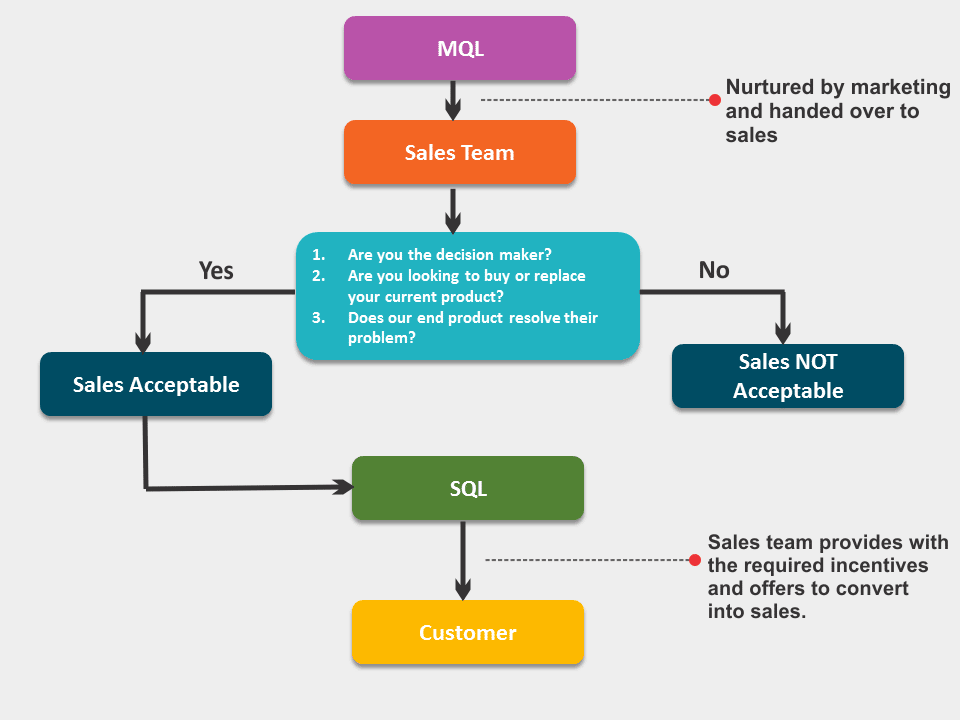It can be frustrating when you’ve implemented a marketing campaign but still suffer from dropped leads and minimal sales. Aligning your marketing initiatives with your business goals is essential if you want to see current and future growth. After all, companies perform best when all its elements and teams collaborate.
A marketing strategy can only get so far without an aligned business and sales strategy. Using a tactical framework to plan and develop your marketing strategy will help get you off to a good start and enable to your team to close the deal at the right moment.
Real growth can’t happen unless your company’s sales team and marketing objectives are aligned and working together towards the same goals. A study by SiriusDecisions has shown that companies who align their marketing and sales objectives achieve 24% faster revenue growth and 27% faster profit growth. If you want to increase growth, both your marketing and sales teams need to be on the same page.
Below are three ways you can align your business goals with your marketing strategy to better support the growth of your company.
1) Choosing Clear Objectives
In order to align your marketing goals with your company’s strategic objectives, you need to make sure that all your marketing goals are Specific, Measurable, Achievable, Relevant, and Timely, which is known as the SMART framework.
For example, say one of your company’s strategic objectives is to generate more sales. An aligned marketing goal could be to increase the number of leads by 12% in the upcoming quarter. This particular marketing goal hits all the points – it is specific (12% growth within the health sector), measurable (did we reach 12% or not?), achievable (12% is decidedly more achievable than 500%), relevant (pairs well with sales goals), AND timely (the goal is set for the next quarter).
Of course, once you have established a marketing goal in line with your business objectives, you’ll need to determine what actions will best help you achieve these goals. Using the same example from above, if your marketing goal is to increase the number of leads by 12% in the first quarter, your marketing team can then choose to implement tactics like pushing a content strategy, supported by downloadable assets, SEO, and social media promotion.
Each objective you decide on will have a specific tactic you should use to implement and measure it. For example, lead generation objectives are best supported by email campaigns and content marketing; whereas, if you want to raise brand awareness, you should implement a pay-per-click or display advertising camping.
2) Process and Communication
At some point, leads gained through marketing are handed off to the sales team. Because of this, it’s important to track the performance of these leads and then communicate the results. It’s a good idea for you to allow your teams to see how a lead interacts with marketing and sales throughout the entire buying process. This can give your marketers a better understanding of customers’ desires and provide insight into where a lead might fall off during their buyer’s journey.
Sales may know what leads convert, but that valuable info isn’t always passed on to the marketing team. Without that information, marketers are forced to rely on vanity metrics, which don’t always provide the best strategic information about whether or not business goals are being met. Communication, qualitative feedback, and content analytics can help provide a valuable and holistic view of how the marketing strategy is performing in relation to sales goals.
An excellent way to ensure that both sales and marketing are on the same page is to utilize lead scoring. Lead scoring can help all teams know the threshold at which a particular customer becomes a Marketing Qualified Lead (MQL), and how they can be turned into a Sales Qualified Lead (SQL) and finally Sales Accepted Lead (SAL). Lead scoring can help sales and marketing have a unified understanding of what makes a qualified lead and how leads are passed through each lifecycle stage. This can provide a more organized workflow that pushes for a feedback loop between both teams.
In other words, marketing can track how many leads become sales qualified (SQL) and sales accepted (SAL), and will also be able to see what the acquisition rate is. Sales, on the other hand, can then put a deeper emphasis on meaningful metrics (e.g. close rate, length of sales cycle, etc.) and better identify where additional marketing injection points are needed.
3) Utilize Analytics and CRM Technology
Analytics are at the heart of decision making for both sales and marketing teams. For example, 74% of companies who didn’t exceed revenue goals had no idea what their lead, visitor, MQL, or sales opportunities were. Clearly, the less companies knew about their KPIs, the less likely they were to meet (or exceed) their revenue goals — this data is compounded by the fact that 42% of marketers say that a lack of quality data is their biggest barrier to lead generation.
As such managing all your marketing activities can mean that you are pulling analytics from a lot of different sources, but this doesn’t always guarantee that the data provides a holistic picture of how their marketing efforts contribute to total revenue. For that, you may want to utilize a centralized Customer Resource Management (CRM) system.
A CRM system can be set up to keep customer data and employee actions accessible and up-to-date, which can help you stay connected to customers, streamline your marketing and sales processes, and of course – improve growth and profitability. Data presented by SalesForce has shown that introducing a CRM platform can improve lead conversion and sales by 30%, increase customer satisfaction by 35%, and raise revenue by 25%.
Final Thoughts
Lastly, ensuring that all your teams are on the same page when it comes to your business strategies is of utmost importance. Both sales and marketing should have a clear understanding of the marketplace problems your company is trying to solve and work together to find tangible solutions. This will not only help drive demand among prospective customers, but will also show that you’re pushing to educate and inform, rather than just pushing for a hard sell.








One Response